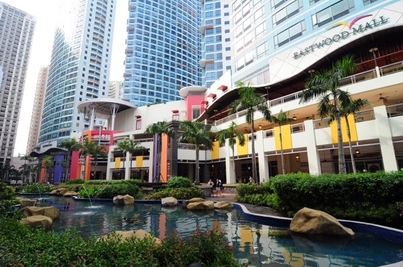WASHINGTON – Land administration in the Philippines is governed by over 60 laws and regulations, some of which date back more than 100 years, creating the potential for conflict and vast opportunities for corruption, a US House committee hearing looking into how best to protect property rights and fight land grabbing in Southeast Asia was told.
In an opening statement, Republican Ed Royce, chairman of the Committee on Foreign Affairs, said an outdated and inefficient land administration system has resulted in fraudulent, overlapping and duplicate or triplicate land titles and widespread land grabbing in the Philippines.
“The perpetrators are local politicians, foreign investors and well-connected people,” he said.
Royce lauded President Aquino for his “considerable efforts to reform and clean up politics” in the country, but said his few years in office cannot undo the years of damage done by deposed President Ferdinand Marcos.
Royce said in the aftermath of violent typhoons, victims on top of losing their homes and belongings can also find themselves without a shred of proof of their rights to their property because of land ownership records damaged or destroyed.
Royce said during a visit to the Philippines as part of a congressional delegation several years ago, he himself was personally prevented at gunpoint from accessing the property of a constituent by what appeared to be local security forces.
Jonathan Stivers, an assistant administrator of the US Agency for International Development, said protecting land rights was key to promoting growth in the rural and urban areas of the Philippines.
The high cost of property registration and the fact that seemingly routine registry processes like correcting clerical mistakes, issuing lost titles and weeding out fraudulent certificates require lengthy court processes, are among the constraints to secure property rights, he said.
As an example, he said 90 percent of land cases handled by the Supreme Court in 2012 took more than 20 years to make their way through the system of hearings and appeals to higher courts.
Several victims of land grabbing in the Philippines were among those who testified at Friday’s hearing.
Joey Quinto, publisher of the California Journal for Filipino Americans, told the hearing he was a land-grabbing victim, “in particular a victim of land locking by a well-connected and powerful general in the Philippines.”
He said the retired general was preventing his family from accessing two properties they owned in Antipolo, Rizal and appeals to government agencies have done nothing to prevent the general from blocking the access road to their property.
Zosimo Laurel Contreras, another Filipino American, said his family’s property in Tagaytay had been seized by a land grabber and there was nothing they could do about it. He asked the committee – in the name of justice and the rule of law – to work with the Philippine government to help his family keep their land inherited through many generations.
By Jose Katigbak, STAR Washington bureau (The Philippine Star)
In an opening statement, Republican Ed Royce, chairman of the Committee on Foreign Affairs, said an outdated and inefficient land administration system has resulted in fraudulent, overlapping and duplicate or triplicate land titles and widespread land grabbing in the Philippines.
“The perpetrators are local politicians, foreign investors and well-connected people,” he said.
Royce lauded President Aquino for his “considerable efforts to reform and clean up politics” in the country, but said his few years in office cannot undo the years of damage done by deposed President Ferdinand Marcos.
Royce said in the aftermath of violent typhoons, victims on top of losing their homes and belongings can also find themselves without a shred of proof of their rights to their property because of land ownership records damaged or destroyed.
Royce said during a visit to the Philippines as part of a congressional delegation several years ago, he himself was personally prevented at gunpoint from accessing the property of a constituent by what appeared to be local security forces.
Jonathan Stivers, an assistant administrator of the US Agency for International Development, said protecting land rights was key to promoting growth in the rural and urban areas of the Philippines.
The high cost of property registration and the fact that seemingly routine registry processes like correcting clerical mistakes, issuing lost titles and weeding out fraudulent certificates require lengthy court processes, are among the constraints to secure property rights, he said.
As an example, he said 90 percent of land cases handled by the Supreme Court in 2012 took more than 20 years to make their way through the system of hearings and appeals to higher courts.
Several victims of land grabbing in the Philippines were among those who testified at Friday’s hearing.
Joey Quinto, publisher of the California Journal for Filipino Americans, told the hearing he was a land-grabbing victim, “in particular a victim of land locking by a well-connected and powerful general in the Philippines.”
He said the retired general was preventing his family from accessing two properties they owned in Antipolo, Rizal and appeals to government agencies have done nothing to prevent the general from blocking the access road to their property.
Zosimo Laurel Contreras, another Filipino American, said his family’s property in Tagaytay had been seized by a land grabber and there was nothing they could do about it. He asked the committee – in the name of justice and the rule of law – to work with the Philippine government to help his family keep their land inherited through many generations.
By Jose Katigbak, STAR Washington bureau (The Philippine Star)


 RSS Feed
RSS Feed
